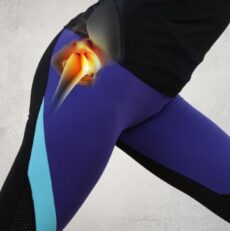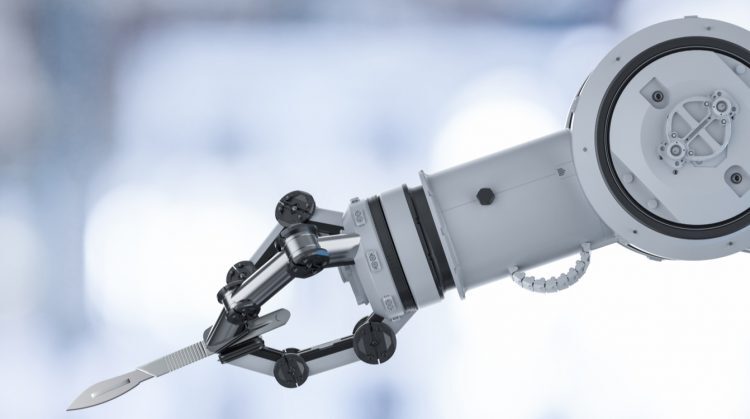
April 8, 2021
Hip Pain : When & What of Hip Pain

Based on research, traditional knee replacement has a success rate of 98% at 10 years and 95% at 20 years[1]. It is a mark that we have entered into the hip and knee replacement surgeries and it symbolises a significant achievement in arthroplasty. While performing a traditional knee replacement procedure, the affected area of the knee is taken out by and replaced with an artificial joint. An orthopaedic surgeon, accrediting their previous experience, performs precise bone cuts and ensures proper leg alignment.
For patients suffering from severe knee pain, robotic knee replacement surgery might sound lucrative. While it sounds like something from the far future, robot-assisted surgery techniques have been marked in the last couple of decades. It implies that a robotic arm will assist the orthopaedic surgeon to perform the surgery. Still, confusion regarding these techniques can put patients health on stake. Since the technology associated with robotic knee surgery is rather new and there are limited studies about it.
In this video below , I have spoken about the role of technology in knee replacement surgery. Further I have also detailed about the computer navigation assisted knee replacement surgery and my experience to conduct precise knee replacement operations.
I have listed below the common questions that people have about Conventional and Robotic Knee assisted knee replacement.
Based on the types of knee replacement, it is advised to consult an orthopedic surgeon to find what works best for the patient depending on their ailments.
Usually, an experienced surgeon carefully identifies the correct alignment and positioning for the metal implant based on X-rays of the joint, according to the traditional surgery protocol. The surgeon then cements the prosthesis with the utmost care. All of this is done manually by an experienced surgeon.
In the case of robot-assisted knee replacement surgery, your orthopaedic surgeon can create a virtual three-dimensional model of your knee using a CT scan and specialised software. This helps the physician to customize the complete or part of the knee replacement based on your anatomy for a precise fit of the custom implant.
Many of the long-term benefits haven’t been properly studied yet as robot-assisted techniques are still new in the medical world. Most orthopaedic companies have placed their biggest bet on robotics. Their hope is that these devices will expedite recuperation, improve kinematics and functions, extend longevity, and decrease premature implant failure. Unfortunately, none of these claims have been scientifically proven in the medical literature[1].
In a robotic knee replacement, the surgeon takes the help of a robot to assist with the operation.The operation is similar to traditional knee operation and makes the same cut in the skin in front of the knee joint.
Experienced surgeons prefer a traditional knee replacement surgery for their patients as opposed to a robot arm assisted surgery. This is because the surgical time is less and proven long term success records. A rather new surgeon would take the assistance of a robot for knee surgeries to achieve precision during the operation.
It is believed that an average patient won’t be able to resume normal activities like driving and going to work until 4 to 6 weeks after surgery with a traditional total knee replacement surgery. Robot-assisted technology does not assure a faster recovery time despite greater surgical precision.
It is observed that faster recovery time does not correlate with robotic surgery. If the faster recovery is to happen, you should be aware that it is due to several reasons.
Rapid recovery happens due to pain control and proper handling of soft tissues during surgery.
There is no compelling evidence or relevant information to prove that there is lower blood loss in robotic knee surgeries as opposed to traditional knee surgeries. In the recent past, there have been several medications that are administered to the patient that reduces blood loss.
Using robotics in orthopaedics has several disadvantages. Some of the disadvantages include increased costs, the need for updating software, increased operation duration, and Imaging for pre-operative templating. Some human errors also come into such as poor input of data from the surgeon and a surgeon learning curve. With an increase in time for the operation, the risk of infection increases.
In the below video, I have clarified the myths about robotic knee surgery. Common facts about robotic knee surgery such as Rapid recovery , Lower blood loss and usage of laser for conducting surgery are covered in this short video.
In the recent Journal by Robert. Booth, a data-based conclusion is made to prove no clinical benefit was achieved by computer-assisted surgery over 15 years. The promise of robotics remains seductive and should be pursued as part of the clinical trial. Improved long-term outcomes have yet to be seen, despite much short-term phenomenology buoyed by marketing incentives. The one incontestable fact is that the robotic cases take more operative time, which is linearly related to complications.
Leave a comment